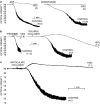Antiplatelet drugs
- PMID: 16402110
- PMCID: PMC1760725
- DOI: 10.1038/sj.bjp.0706401
Antiplatelet drugs
Figures


















Similar articles
-
[Various therapy options. Medical Chemistry of platelet aggregation inhibitors].Pharm Unserer Zeit. 2009;38(4):314-9. doi: 10.1002/pauz.200900320. Pharm Unserer Zeit. 2009. PMID: 19572349 Review. German. No abstract available.
-
Aspirin in patients with coronary artery disease: is it simply irresistible?J Thromb Thrombolysis. 2001 Apr;11(2):117-26. doi: 10.1023/a:1011220615447. J Thromb Thrombolysis. 2001. PMID: 11406726 Review. No abstract available.
-
Antiplatelet drugs: Antithrombotic Therapy and Prevention of Thrombosis, 9th ed: American College of Chest Physicians Evidence-Based Clinical Practice Guidelines.Chest. 2012 Feb;141(2 Suppl):e89S-e119S. doi: 10.1378/chest.11-2293. Chest. 2012. PMID: 22315278 Free PMC article. Review.
-
Antiplatelet therapy in cardiovascular disease.Postgrad Med J. 2004 Mar;80(941):155-64. doi: 10.1136/pgmj.2003.007062. Postgrad Med J. 2004. PMID: 15016937 Free PMC article. Review.
-
Platelet-active drugs : the relationships among dose, effectiveness, and side effects.Chest. 2001 Jan;119(1 Suppl):39S-63S. doi: 10.1378/chest.119.1_suppl.39s. Chest. 2001. PMID: 11157642 Review. No abstract available.
Cited by
-
Editorial on low-dose acetylsalicylic acid treatment and impact on short-term mortality in Staphylococcus aureus bloodstream infection: a propensity score-matched cohort study.Ann Transl Med. 2016 May;4(10):199. doi: 10.21037/atm.2016.05.35. Ann Transl Med. 2016. PMID: 27294095 Free PMC article.
-
A review study to evaluate holmium:YAG laser lithotripsy with flexible ureteroscopy in patients on ongoing oral anticoagulant therapy.Lasers Med Sci. 2017 Sep;32(7):1615-1619. doi: 10.1007/s10103-017-2289-4. Epub 2017 Jul 22. Lasers Med Sci. 2017. PMID: 28733910
-
Impact of antiplatelet therapy on outcomes of sepsis: A systematic review and meta-analysis.PLoS One. 2025 Apr 29;20(4):e0322293. doi: 10.1371/journal.pone.0322293. eCollection 2025. PLoS One. 2025. PMID: 40299932 Free PMC article.
-
Fifty years with aspirin and platelets.Br J Pharmacol. 2023 Jan;180(1):25-43. doi: 10.1111/bph.15966. Epub 2022 Nov 3. Br J Pharmacol. 2023. PMID: 36189951 Free PMC article. Review.
-
The inhibitory effect of non-steroidal anti-inflammatory drugs (NSAIDs) on the monophenolase and diphenolase activities of mushroom tyrosinase.Int J Mol Sci. 2011;12(6):3998-4008. doi: 10.3390/ijms12063998. Epub 2011 Jun 14. Int J Mol Sci. 2011. PMID: 21747720 Free PMC article.
References
-
- BORN G.V.R. Quantitative investigations into the aggregation of blood platelets. J. Physiol. 1962a;162:7–68.
-
- BORN G.V.R. Aggregation of blood platelets by adenosine diphosphate and its reversal. Nature (London) 1962b;194:927–929. - PubMed
-
- BORN G.V.R. Strong inhibition by 2-chloroadenosine of the aggregation of blood platelets by adenosine diphosphate. Nature (London) 1964;202:95–96. - PubMed
Publication types
MeSH terms
Substances
LinkOut - more resources
Full Text Sources
Other Literature Sources
Medical

